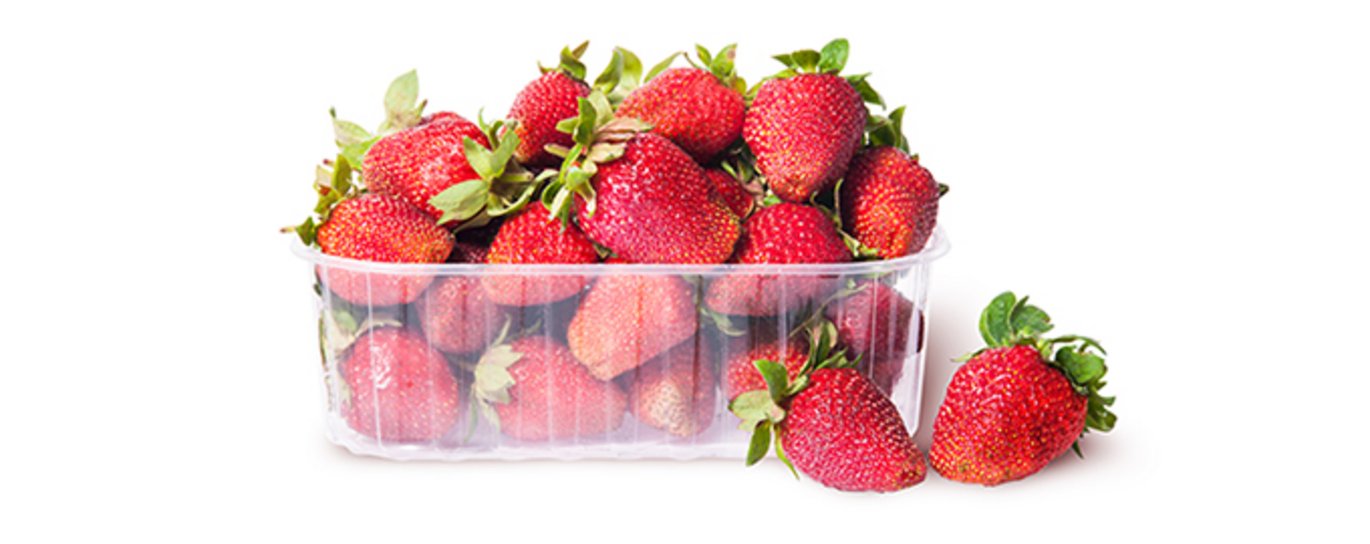Developing new, sustainable packaging for fruits and vegetables
New research and product development in the area of sustainable packaging for fruit and vegetables were presented at a seminar at the Danish Technological Institute in Aarhus on 25 November. One of the ideas is to transform discarded fruits and vegetables into packaging for fresh fruits and vegetables.

How can you make packaging for fruits and vegetables that preserves, protects and is sustainable at the same time? This was the theme at the Danish Technological Institute, where the presentations came from both research institutions and a number of companies, who focus on working with more sustainable packaging, while taking quality and durability into account.
Decision-making tool for packaging of fresh fruits and vegetables
In the beginning of the day, the GUDP project (Green Development and Demonstration Programme) Kvalipak was presented. The project has tested new packaging solutions to reduce the development of rot in packed fruits and vegetables - under the leadership of Aarhus University and the Danish Technological Institute. The goal is to reduce food waste both in the retail part of the value chain and in the consumer part.
Merete Edelenbos, Associate Professor at the Department of Food Science, Aarhus University, explains:
- In Kvalipak, we have studied both packaging with conventional plastic materials (in the study, oil-based BOPP film was used) and with alternative bioplast materials (in the study, polylactate and a starch-based bioplastic was used). There is a high degree of pressure to find alternatives for plastic packaging. It is an important driving force in connection with fruits and vegetables that the consumers see plastic packaging as something unnatural. However, the problem is not that easy.
Merete Edelenbos explains that there continues to be a need for developing packaging for fresh fruits and vegetables:
- Our studies have shown that bioplastic can reduce condensation and rot in packed fruits and vegetables; however, there is a number of other challenges in the use of bioplastic. Plants are used to produce bioplastic, and these might have been used for food production. The sustainability is also challenged, because it is not yet possible to reuse bioplastic. Furthermore, bioplastic has some technological challenges.
Merete Edelenbos stresses that producers and retailers demand solutions that take into account both the environmental impact of food waste and that of the packaging, but that this is easier said than done:
- In continuation of Kvalipak, we would like to create a decision-making tool for packaging of fresh fruits and vegetables. We need a more holistic approach that can make the sustainable packaging choice easier.
Discarded fruits and vegetables turned into new packaging
One of the companies trying to solve the issue of sustainable packaging is Cellugy, who also gave a presentation at the theme day. The local company is working on transforming discarded fruits and vegetables into biodegradable plastic packaging.
Cellugy co-founder Isabel Álvarez-Martos explains:
- Our bioplastic material is created from food waste, and it is 100 % biodegradable at room temperature. In that way, the product can help to reduce food waste.
Cellugy emerged from a cooperation between four students in the case competition DEAN’s Challenge at Aarhus University in 2017, and the company is therefore in the startup phase.
- We are currently working to secure the right patents and to scale up the production in order to meet the demands and the expectations in the industry.
The other presentations at the theme day were given by the Danish Technological Institut and the companies Årstiderne and Salling Group.
More information
Associate Professor Merete Edelenbos
Department of Food Science, Aarhus University
E-mail: merete.edelenbos@food.au.dk
Phone: 29450133
